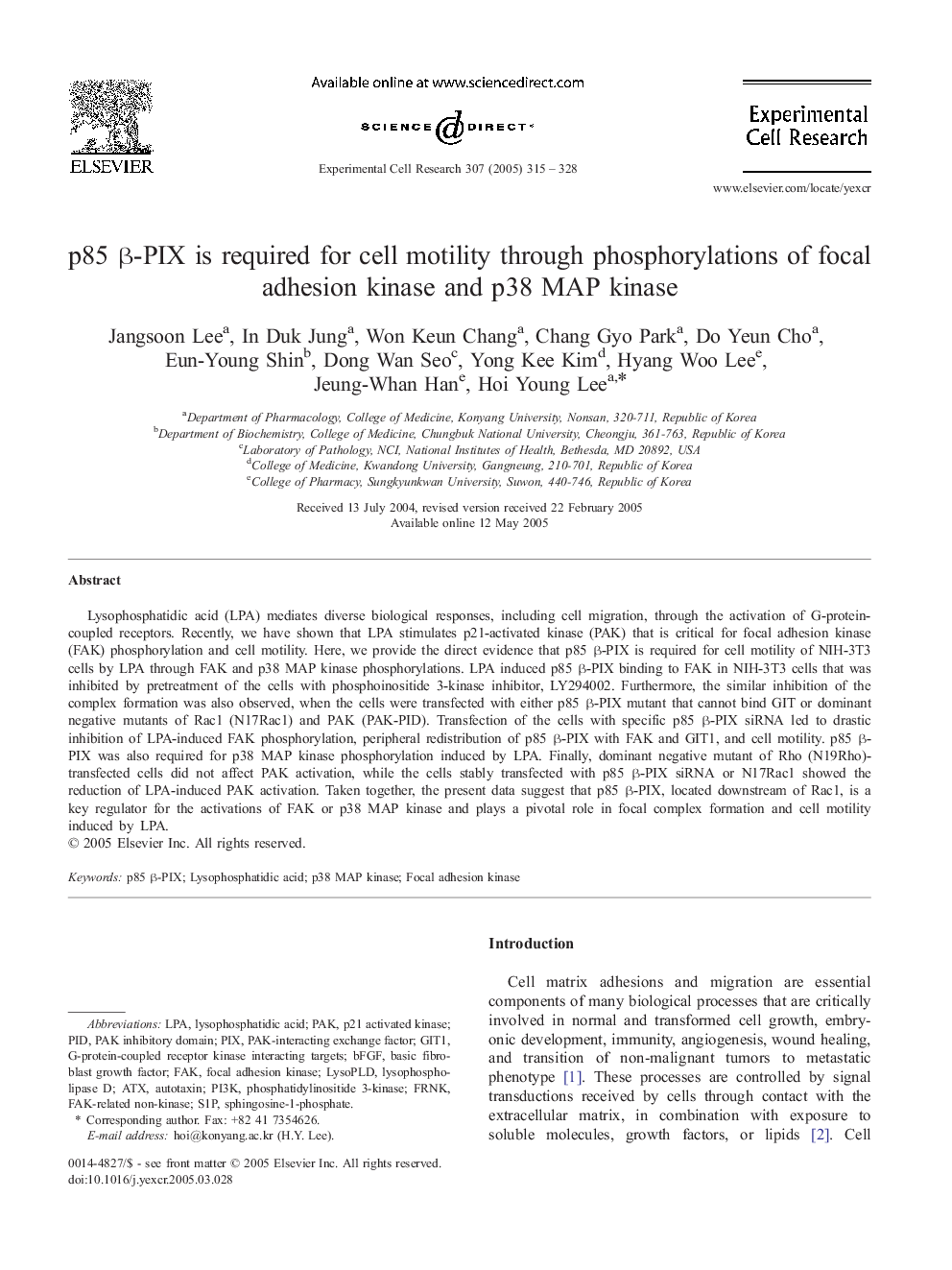| Article ID | Journal | Published Year | Pages | File Type |
|---|---|---|---|---|
| 10904966 | Experimental Cell Research | 2005 | 14 Pages |
Abstract
Lysophosphatidic acid (LPA) mediates diverse biological responses, including cell migration, through the activation of G-protein-coupled receptors. Recently, we have shown that LPA stimulates p21-activated kinase (PAK) that is critical for focal adhesion kinase (FAK) phosphorylation and cell motility. Here, we provide the direct evidence that p85 β-PIX is required for cell motility of NIH-3T3 cells by LPA through FAK and p38 MAP kinase phosphorylations. LPA induced p85 β-PIX binding to FAK in NIH-3T3 cells that was inhibited by pretreatment of the cells with phosphoinositide 3-kinase inhibitor, LY294002. Furthermore, the similar inhibition of the complex formation was also observed, when the cells were transfected with either p85 β-PIX mutant that cannot bind GIT or dominant negative mutants of Rac1 (N17Rac1) and PAK (PAK-PID). Transfection of the cells with specific p85 β-PIX siRNA led to drastic inhibition of LPA-induced FAK phosphorylation, peripheral redistribution of p85 β-PIX with FAK and GIT1, and cell motility. p85 β-PIX was also required for p38 MAP kinase phosphorylation induced by LPA. Finally, dominant negative mutant of Rho (N19Rho)-transfected cells did not affect PAK activation, while the cells stably transfected with p85 β-PIX siRNA or N17Rac1 showed the reduction of LPA-induced PAK activation. Taken together, the present data suggest that p85 β-PIX, located downstream of Rac1, is a key regulator for the activations of FAK or p38 MAP kinase and plays a pivotal role in focal complex formation and cell motility induced by LPA.
Keywords
Related Topics
Life Sciences
Biochemistry, Genetics and Molecular Biology
Cancer Research
Authors
Jangsoon Lee, In Duk Jung, Won Keun Chang, Chang Gyo Park, Do Yeun Cho, Eun-Young Shin, Dong Wan Seo, Yong Kee Kim, Hyang Woo Lee, Jeung-Whan Han, Hoi Young Lee,
